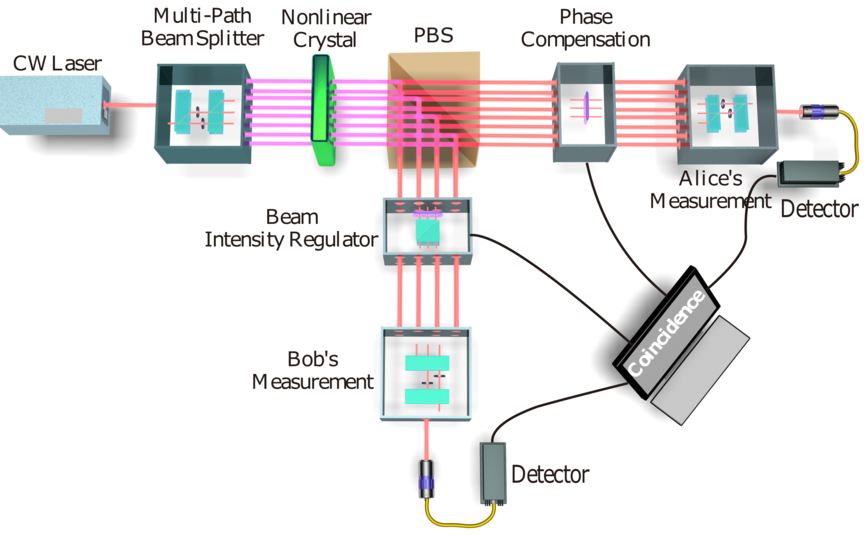Efficient Generation of High-Dimensional Entanglement for a more efficient quantum secured communication
07.09.2020
Quantum communication often relies on the quantum phenomenon of entanglement to outperform classical communication in certain tasks. One of the most prominent of these tasks is quantum cryptography, where entanglement enables users to communicate securely without being eavesdropped. Experiments and applications in this direction have so far focused on encoding the exchanged information into qubits, the quantum equivalents of bits. This means that for single photon pairs a degree of freedom is used that only has two possible states, comparable to the classical bit values “0” and “1”. Recent efforts have shown the feasibility of attaining higher amounts of entanglement by employing photon properties with numerous possible states. This enables more bits and therefore more information to be encoded in each photon pair. High-dimensional entanglement therefore promises to greatly enhance the performance of quantum communication and enable quantum advantages unreachable by qubit entanglement.
High-dimensional entanglement, however, also brings about novel challenges that need to be overcome to unlock its potential for applications in quantum technologies. The first challenge concerns the reliable production of such high-dimensionally entangled states and subsequently also their manipulation and detection. The second challenge is the distribution in communication networks, which is often not possible with the fibres most commonly used today. Finally, such high-dimensional properties of photons are often more difficult to be measured than ones of “traditional” qubits. This poses a challenge for the hardware needed by the users in order to read and certify the messages locally, a basic requirement for a large range of applications.
Researchers from the CAS Key Laboratory of Quantum Information of China in Hefei in collaboration with Paul Erker from the YIRG group at IQOQI Vienna have under the lead of IQOQI group leader Marcus Huber contributed to solving these challenges with a new experiment. They created a novel optical setup that is capable of creating high-dimensional entangled states, which are easy to interface with traditional means of distribution and can be easily measured. Their work, published in the journal Physical Review Letters, shows that this novel optical setup is capable of producing high-dimensionally entangled quantum states with an exceptionally high level of scalability, control, and quality. In combination with new encryption and certification techniques, they have achieved to certify the highest amount of entanglement so far. The high amounts of entanglement produced in this way open up new avenues for more efficient and ample application of entanglement in quantum communication.
Publication:
„Efficient Generation of High-Dimensional Entanglementthrough Multipath Down-Conversion“, Xiao-Min Hu, Wen-Bo Xing, Bi-Heng Liu, Yun-Feng Huang, Chuan-Feng Li, Guang-Can Guo, Paul Erker, and Marcus Huber, Phys. Rev. Lett. 125, 090503 (2020)
